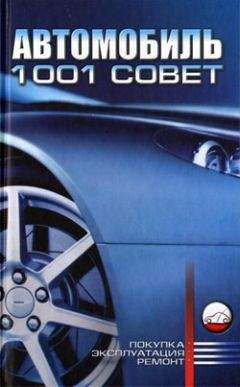Александр Панчин - Сумма биотехнологии. Руководство по борьбе с мифами о генетической модификации растений, животных и людей
Что будет, если генетически модифицировать попа?
Влияние такого попа на здоровье населения или окружающую среду до конца не изучено. Но, вероятно, он может “убежать” в дикую природу.
Какие есть примеры использования ГМО во вредных целях?
Такие примеры пока не известны.
Могли бы ГМО получиться в процессе эволюции?
Если речь идет о ГМО, существующих на рынке, то в процессе эволюции могли получиться организмы с похожими свойствами, но, скорее всего, они накопили бы массу других генетических изменений в ходе этого длительного процесса.
Можно ли сделать синий томат? Зеленый чеснок?
Запросто.
Можно ли всадить ген стула в банан?
Стул состоит из древесины. Гены из дерева в геном банана перенести можно.
Как широко будут распространены ГМО через несколько лет?
Думаю, что скоро они будут распространены повсеместно.
Могу ли я вырастить дома генномодифицированную капусту?
Вполне.
А наши потомки будут рассказывать своим детям сказки о том, что “когда-то люди ели обычную картошку ”?
Я думаю, даже мы успеем рассказать своим потомкам, что “когда-то мы ели обычную картошку”.
А как можно связаться с автором?
Например, через его блог http://scinquisitor.livejournal.com/
Благодарности
Автор выражает благодарность редакторам, корректорам, рецензентам и научным консультантам, которые помогали в работе над книгой. Прежде всего Евгении Дуевой, Михаилу Гельфанду, Асе Казанцевой, Александру Соколову, Сергею Маркову, Екатерине Шутовой, Илье Флямеру, Сергею Березневу, Дмитрию Воронову, Сергею Белкову, а также моим родителям Юрию и Надежде Панчиным. Я благодарен редактору издательства Corpus Екатерине Владимирской за ценные литературные поправки и замечания, которые помогли значительно улучшить текст книги. Автор выражает отдельную благодарность художнику Олегу Добровольскому за иллюстрации, сделанные для этой книги.
Я бы не смог написать эту книгу, если бы не школьные и университетские преподаватели, которые на протяжении многих лет делились со мной своими знаниями и поддерживали мой интерес к науке. Прежде всего я благодарен своему учителю биологии Сергею Менделевичу Глаголеву.
Я также хочу выразить благодарность Институту проблем передачи информации РАН, старшим научным сотрудником которого являюсь, за создание благоприятной рабочей атмосферы, позволяющей одновременно заниматься наукой и ее популяризацией.
Список литературы
1. Lazaris A. et al.: Spider silk fibers spun from soluble recombinant silk produced in mammalian cells. Science 2002, 295(5554):472–6.
2. Wen H. et al.: Transgenic silkworms (Bombyx mori) produce recombinant spider dragline silk in cocoons. Mol Biol Rep 2010, 37(4):1815–21.
3. Gomes S.C. et al.: Antimicrobial functionalized genetically engineered spider silk. Biomaterials 2011, 32(18):4255–66.
4. Maga E.A. et al.: Human lysozyme expressed in the mammary gland of transgenic dairy goats can inhibit the growth of bacteria that cause mastitis and the cold-spoilage of milk. Foodborne Pathog Dis 2006, 3(4):384–92.
5. Wang L.S., Stoner G.D.: Anthocyanins and their role in cancer prevention. Cancer Lett 2008, 269(2):281–90.
6. Toufektsian M.C. et al.: Chronic dietary intake of plantderived anthocyanins protects the rat heart against ischemia-reperfusion injury. J Nutr 2008, 138(4):747–52.
7. Tsuda T. et al.: Dietary cyanidin 3-O-beta-D-glucoside-rich purple corn color prevents obesity and ameliorates hyperglycemia in mice. J Nutr 2003, 133(7):2125–30.
8. Butelli E. et al.: Enrichment of tomato fruit with health-promoting anthocyanins by expression of select transcription factors. Nat Biotechnol 2008, 26(11):1301–8.
9. Walsh G.: Therapeutic insulins and their large-scale manufacture. Appl. Microbiol Biotechnol 2005, 67(2):151–9.
10. Pipe S.W.: Recombinant clotting factors. Thromb Haemost 2008, 99(5):840–50.
11. Baxter L. et al.: Recombinant growth hormone for children and adolescents with Turner syndrome. Cochrane Database Syst Rev 2007(1):CD003887.
12. Hillman J.D. et al.: Modification of an effector strain for replacement therapy of dental caries to enable clinical safety trials. Appl Microbiol 2007, 102(5):1209–19.
13. Chen Z. et al.: Incorporation of therapeutically modified bacteria into gut microbiota inhibits obesity. J Clin Invest 2014, 124(8):3391–406.
14. Fedosov S.N. et al.: Human intrinsic factor expressed in the plant Arabidopsis thaliana. Eur J Biochem 2003, 270(16):3362–7.
15. Stein L. et al.: Clinical gene therapy for the treatment of RPE65-associated Leber congenital amaurosis. Expert Opin Biol Ther 2011, 11(3):429–39.
16. Gaspar H.B. et al.: Long-term persistence of a polyclonal T cell repertoire after gene therapy for X-linked severe combined immunodeficiency. Sci Transl Med 2011, 3(97):97ra79.
17. Brentjens R.J. et al.: CD19-targeted T cells rapidly induce molecular remissions in adults with chemotherapy-refractory acute lymphoblastic leukemia. Sci Transl Med 2013, 5(177):177ra38.
18. Forsberg C.W. et al.: Integration, stability and expression of the E. coli phytase transgene in the Cassie line of Yorkshire Enviropig. Transgenic Res 2013, 22(2):379–89.
19. Callaway E.: Glowing plants spark debate. Nature 2013, 498(7452):15–6.
20. Marcus J.M. et al.: Germline transformation of the butterfly Bicyclus anynana. Proc Biol Sci 2004, 271 Suppl 5:S263–5.
21. Ormandy E.H. et al.: Genetic engineering of animals: ethical issues, including welfare concerns. Can Vet J 2011, 52(5):544–50.
22. Clark S. et al.: Frequency of US emergency department visits for food-related acute allergic reactions. J Allergy Clin Immunol 2011, 127(3):682–3.
23. Gilissen L.J. et al.: Silencing the major apple allergen Mald 1 by using the RNA interference approach. J Allergy Clin Immunol 2005, 115(2):364–9.
24. Gulland A.: Average daily consumption of sugar must be halved, says WHO. BMJ 2014, 348:g2003.
25. Zemanek E.C., Wasserman B.P.: Issues and advances in the use of transgenic organisms for the production of thaumatin, the intensely sweet protein from Thaumatococcus danielli. Crit Rev Food Sci Nutr 1995, 35(5):455–66.
26. Mahdavi F. et al.: Expression of rice thaumatin-like protein gene in transgenic banana plants enhances resistance to fusarium wilt. Appl Biochem Biotechnol 2012, 166(4):1008–19.
27. Rothemund P.W.: Folding DNA to create nanoscale shapes and patterns. Nature 2006, 440(7082):297–302.
28. Zadegan R.M. et al.: Construction of a 4 zeptoliters switchable 3D DNA box origami. ACS Nano 2012, 6(11):10050–3.
29. Thrall P.H. et al.: Evolutionary change in agriculture: the past, present and future. Evol Appl 2010, 3(5–6):405–8.
30. Klumper W., Qaim M.: A meta-analysis of the impacts of genetically modified crops. PLOS ONE 2014, 9(11):e111629.
31. Fernandez-Cornejo J. et al.: Genetically Engineered Crops in the United States. United States Department of Agriculture 2014, Economic Research Report Number 162.
32. Lu Y. et al.: Widespread adoption of Bt cotton and insecticide decrease promotes biocontrol services. Nature 2012, 487(7407):362–5.
33. Tripathi S. et al.: Papaya ringspot virus-P: characteristics, pathogenicity, sequence variability and control. Mol Plant Pathol 2008, 9(3):269–80.
34. Neilson R.: Proposals for the future regulation of biotechnology in Australia. Melb Univ Law Rev 1992, 18(3):692–8.
35. Cohen S.N., Chang A.C.: Recircularization and autonomous replication of a sheared R-factor DNA segment in Escher ichia coli transformants. Proc Natl Acad Sci USA 1973, 70(5):1293–7.
36. Jaenisch R., Mintz B.: Simian virus 40 DNA sequences in DNA of healthy adult mice derived from preimplantation blastocysts injected with viral DNA. Proc Natl Acad Sci U S A 1974, 71(4):1250–4.
37. Fraley R.T. et al.: Expression of bacterial genes in plant cells. Proc Natl Acad Sci USA 1983, 80(15):4803–7.
38. Witthoft M., Rubin G.J.: Are media warnings about the adverse health effects of modern life self-fulfilling? An experimental study on idiopathic environmental intolerance attributed to electromagnetic fields (IEI-EMF). J Psychosom Res 2013, 74(3):206–12.
39. Zubieta J.K., Stohler C.S.: Neurobiological mechanisms of placebo responses. Ann NY Acad Sci 2009, 1156:198–210.
40. McMillan F.D.: The placebo effect in animals. J Am Vet Med Assoc 1999, 215(7):992–9.
41. Munana K.R. et al.: Placebo effect in canine epilepsy trials. J Vet Intern Med 2010, 24(1):166–70.
42. Zulkifli I.: Review of human-animal interactions and their impact on animal productivity and welfare. J Anim Sci Biotechnol 2013, 4(1):25.
43. de Craen A.J. et al.: Effect of colour of drugs: systematic review of perceived effect of drugs and of their effectiveness. BMJ 1996, 313(7072):1624–6.
44. Waber R.L. et al.: Commercial features of placebo and therapeutic efficacy. JAMA 2008, 299(9):1016–7.
45. Bjorkedal E., Flaten M.A.: Interaction between expectancies and drug effects: an experimental investigation of placebo analgesia with caffeine as an active placebo. Psychopharmacology (Berl) 2011, 215(3):537–48.
46. Purves D. et al.: Neuroscience. 2001.
47. Hrobjartsson A., Gotzsche P.C.: Placebo interventions for all clinical conditions. Cochrane Database Syst Rev 2010(1):CD003974.
48. McDonald C.J. et al.: How much of the placebo ‘effect’ is really statistical regression? Stat Med 1983, 2(4):417–27.
49. Benson H. et al.: Study of the Therapeutic Effects of Intercessory Prayer (STEP) in cardiac bypass patients: a multicenter randomized trial of uncertainty and certainty of receiving intercessory prayer. Am Heart J 2006, 151(4):934–42.
50. Kwok R.H.: Chinese-restaurant syndrome. N Engl J Med 1968, 278(14):796.
51. Tarasoff L., Kelly M.F.: Monosodium L-glutamate: a doubleblind study and review. Food Chem Toxicol 1993, 31(12):1019–35.
52. Geha R.S. et al.: Review of alleged reaction to monosodium glutamate and outcome of a multicenter double-blind placebo-controlled study. J Nutr 2000, 130(4S Suppl):1058S-62S.
53. Ye X. et al.: Engineering the provitamin A (beta-carotene) biosynthetic pathway into (carotenoid-free) rice endosperm. Science 2000, 287(5451):303–5.
54. Romer S. et al.: Elevation of the provitamin A content of transgenic tomato plants. Nat Biotechnol 2000, 18(6):666–9.
55. Paine J.A. et al.: Improving the nutritional value of Golden Rice through increased pro-vitamin A content. Nat Biotechnol 2005, 23(4):482–7.
56. http://www.levada.ru/sites/default/files/shuvalova_o._otnoshenie_naseleniya_k_nauke.pdf
57. Buchholz U. et al.: German outbreak of Escherichia coli O104:H4 associated with sprouts. N Engl J Med 2011, 365(19):1763–70.
58. King L.A. et al.: Outbreak of Shiga toxin-producing Escherichia coli O104:H4 associated with organic fenugreek sprouts, France, June 2011. Clin Infect Dis 2012, 54(11):1588–94.
59. Oliveira M. et al.: Microbiological quality of fresh lettuce from organic and conventional production. Food Microbiol 2010, 27(5):679–84.
60. Wetzel K. et al.: Comparison of microbial diversity of edible flowers and basil grown with organic versus conventional methods. Can J Microbiol 2010, 56(11):943–51.
61. Fineschi V. et al.: Histological criteria for diagnosis of amanita phalloides poisoning. J Forensic Sci 1996, 41(3):429–32.
62. Kiran K.S., Padmaja G.: Inactivation of trypsin inhibitors in sweet potato and taro tubers during processing. Plant Foods Hum Nutr 2003, 58(2):153–63.
63. Freestone P.S. et al.: Acute action of rotenone on nigral dopaminergic neurons – involvement of reactive oxygen species and disruption of Ca2+ homeostasis. Eur J Neurosci 2009, 30(10):1849–59.
64. Gao H.M. et al.: Critical role for microglial NADPH oxidase in rotenone-induced degeneration of dopaminergic neurons. J Neurosci 2003, 23(15):6181–7.
65. Pan-Montojo F. et al.: Progression of Parkinson’s disease pathology is reproduced by intragastric administration of rotenone in mice. PLOS ONE 2010, 5(1):e8762.
66. Xu X. et al.: Natural pesticide dihydrorotenone arrests human plasma cancer cells at the G0/G1 phase of the cell cycle. J Biochem Mol Toxicol 2014, 28(5):232–8.
67. Simeone V. et al.: Residues of rotenone, azadirachtin, pyrethrins and copper used to control Bactrocera oleae (Gmel.) in organic olives and oil. Food Addit Contam Part A Chem Anal Control Expo Risk Assess 2009, 26(4):475–81.
68. Ames B.N. et al.: Dietary pesticides (99.99 % all natural). Proc Natl Acad Sci USA 1990, 87(19):7777–81.
69. Korpan Y.I. et al.: Potato glycoalkaloids: true safety or false sense of security? Trends in biotechnology 2004, 22(3):147–51.
70. Akeley R. et al.: Lenape: A new potato variety high in solids and chipping quality. Am Potato J 1968, 45(142–145).


